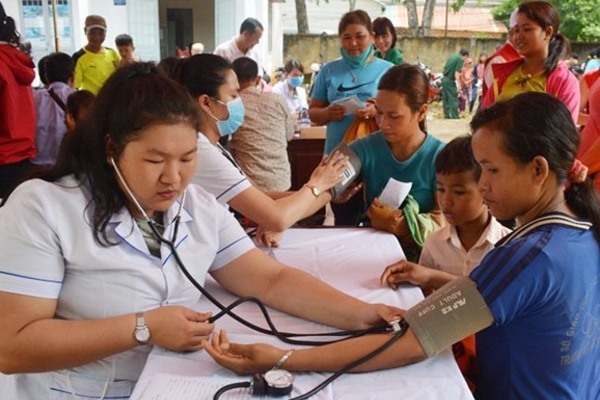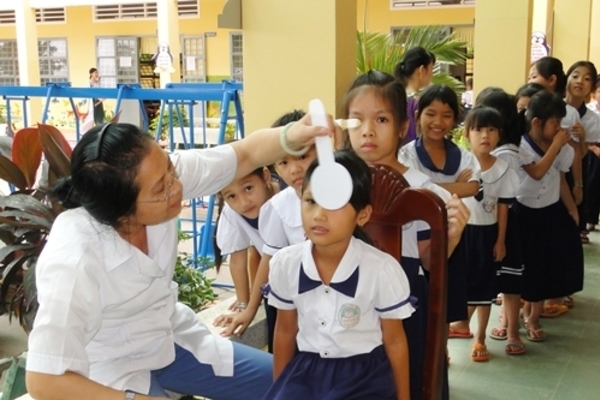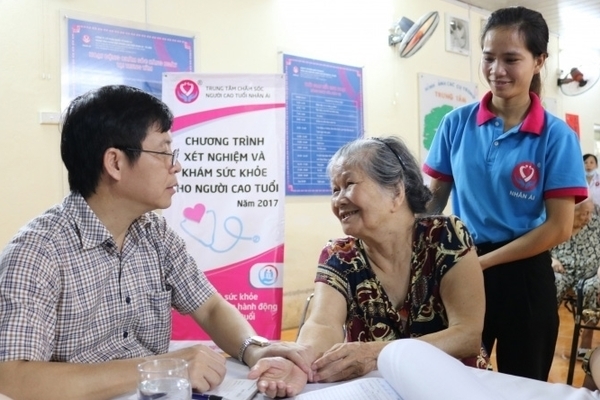 |
|
The latest survey at hospitals across the country shows that compared to the time before the implementation of the program to reduce overload at Vietnamese hospitals (2013), 5,078 clinical and paraclinical departments have been renovated and upgraded.
|
The 6th Conference of the 12th Party Central Committee issued Resolution No. 20-NQ/TW, dated 25 July 2017 on strengthening the protection, care and promotion of people’s health in the new situation. The resolution emphasizes to improve the quality of medical examination and treatment, basically overcome the overload at hospitals in Vietnam.
The latest survey at hospitals across the country shows that compared to the time before the implementation of the program to reduce overload at Vietnamese hospitals (2013), 5,078 clinical and paraclinical departments have been renovated and upgraded.
At the central-level hospitals, the top overload departments include: Oncology, cardiology, trauma orthopedics, and pediatric departments. The overloading situation at these departments has decreased. For example, the hospital bed occupancy rate at Hanoi-based Bach Mai Hospital reduced from 168 % in 2011 to 112% in 2018, from 249% in 2011 to 98% in 2018 at the Hanoi-based K Hospital, and from 154% in 2011 to 95% in 2018 at the HCM-City based Cho Ray Hospital.
Scheme to develop satellite hospitals
To fulfil the goal of having commune-level health stations in all areas with difficult socio-economic conditions by 2020, the Vietnam Government has instructed the Ministry of Health to coordinate with others ministries, branches and localities to increasing investment in grassroots health, particularly focusing on building, renovating commune-level health stations and equipping these stations with new medical equipment.
The Ministry of Health has recently focused its investment in building many new health facilities, such as: the second facility of K Hospital in Thanh Tri district, and the third facility in Tan Trieu; the second facility for the HCM City Turmor Hospital (in District 9), the Hanoi-based Endocrine Hospital (in Thanh Tri District), Hanoi-based Bach Mai Hospital (in Phu Ly City), and Hanoi-based Viet Duc Hospital (in Phu Ly City).
 |
|
VN ensures every citizen’s right to be protected and access to healthcare
|
Currently, the Ministry of Health is also focusing on building a network of satellite hospitals (including some hospitals under the Ministry of Health, the Hanoi Department of Health, the Ho Chi Minh City Department of Health, and some provinces and cities). These satellite hospitals are to support overloaded departments such as surgery - trauma, cardiology, oncology, obstetrics and pediatrics.
In addition, regulations on obligation rotating, male and female doctors have to work at grassroots-level hospitals for 6-12 months are also implemented. Policies to encourage young doctors to voluntary work at grassroots-level hospitals are also promoted.
The implementation of regulations on social obligations of health workers will contribute significantly in reducing overload of medical examination and treatment at hospitals. For the medical stations that don’t have doctors, doctors will be sent there to work in shifts of 2-3 days per week. These health stations will be also allocated with intermediate-level physicians, nurses and pharmacists. This is considered solutions for improving capacity of grassroots health care stations.
 |
|
The health sector’s concern for many years is to basically solve the overcrowding of medical examination and treatment at some central-level hospitals by 2020.
|
It is reported that the program to reduce overload at hospitals has brought about some initial results with the development of the network of satellite hospitals. On January 9, 2013, the Prime Minister issued Decision No. 92/QD-TTg approving the scheme on reducing hospital overload for the period of 2013-2020, which emphasized the establishment and development of the network of satellite hospitals for five departments of Oncology, Surgery - Trauma, Cardiology, Obstetrics and Pediatrics. The centers of these satellite hospitals are some central-level hospitals based in Hanoi and Ho Chi Minh City as a nuclear hospital. At the same time, a number of provincial and district hospitals were also upgraded as satellite hospitals of the central hospitals.
In addition to developing the network of satellite hospitals, the Government has directed the Ministry of Health to coordinate with the Ministry of Finance and the Vietnam Social Insurance to compile and issue circulars on the price of medical services in order to ensure the right to medical examination and treatment for people.
In 2018, the Government spent about VND31,140 billion and about VND32,300 billion in 2019 to help the poor and social policy beneficiaries to buy health insurance, contributing to the result of 89.6% of the population covered by health insurance by August 2019.
The benefits of patients with health insurance have been improved significantly because they do not have to pay for or buy some drugs and supplies that previously they had to purchase themselves or had to pay partly.
In addition, as of 2018, the whole country had about 240 health facilities that could cover its own spendings and 1,250 others could cover part of their spendings. Local authorities also reduced its spending sourced from the state budget for paying salary for health workers. Incomplete statistics of 55 provinces and cities show that in 2018, the state budget allocated for hospitals decreased by VND8,947 billion compared to 2015, contributing to the implementation of the policy of gradually reducing state budget to hospitals while gradually increasing state support for people to buy health insurance.
Tran Hang
 The health sector’s concern for many years is to basically solve the overcrowding of medical examination and treatment at some central-level hospitals by 2020.
The health sector’s concern for many years is to basically solve the overcrowding of medical examination and treatment at some central-level hospitals by 2020.